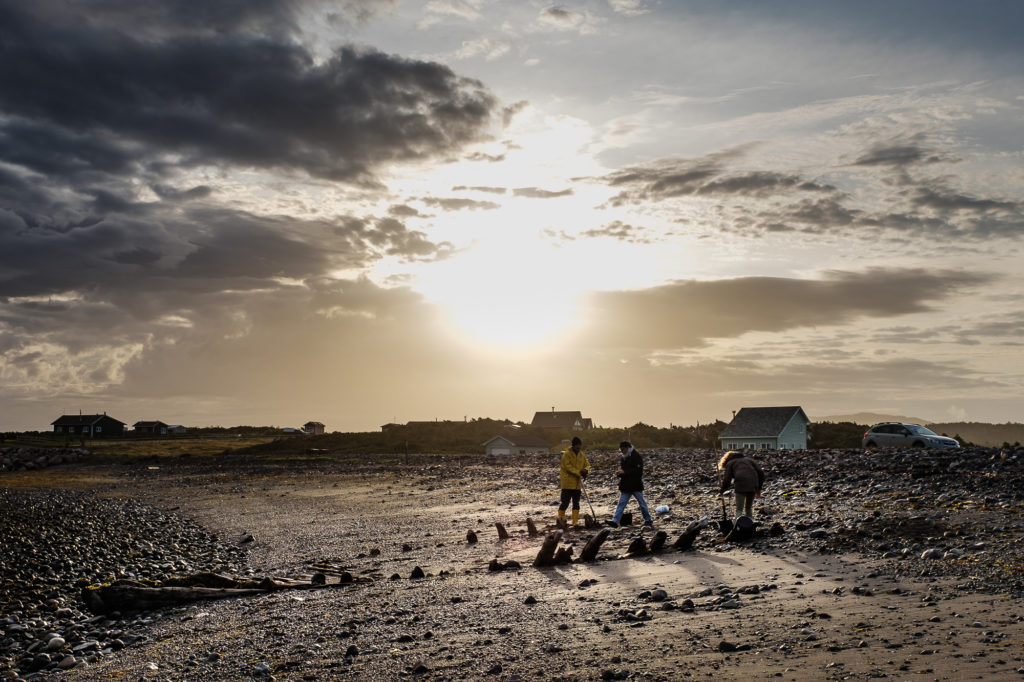
Saint-Pierre and Miquelon (France)
The Archipelago of Shipwrecks, from Myth to Study
Cécile Sauvage (Département des recherches archéologiques subaquatiques et sous-marines, DRASSM)
The archipelago of Saint-Pierre and Miquelon, currently France’s only overseas territory in North America, is an exception within the French Maritime Empire in that it is the only colony of exploitation, and one entirely devoted to the exploitation of French fishing rights on the Grand Banks. Starting in the early 16th century, fishing on the Grand Banks peaked in the 19th century and was definitively undermined by the Canadian moratorium of 1992.
In this small territory whose development is totally linked to cod fishing, and where difficult navigation conditions have driven several hundred ships ashore, shipwrecks are an integral part of the archipelago’s identity.
However, not all the wrecks mentioned in the shipwreck maps drawn up from local archives are preserved. Since 2017, the archaeological inventory campaigns led by the Département des recherches archéologiques subaquatiques et sous-marines (Drassm), aims to establish a first archaeological cartography of the wrecks of the archipelago. Among the fifty or so sites already inventoried, several wooden or metal wrecks are located in the intertidal zone, and dated from the nineteenth and twentieth centuries.
During the archaeological campaigns, these wrecks are subject to surveys, pits, samples and architectural records. Study and conservation is more problematic during the winter. The sites are indeed threatened by coastal erosion and very rapid sedimentary movements, but also sometimes by anthropic activities ranging from simple artefact collection to the destruction of wrecks by local authorities.In response to this problem, an informal network of local informers has been gradually set up in order to keep a watch on the coastline and to quickly report any discoveries. The reported sites are then subject to photogrammetry with the help of drones and wood samples for dendrometric analysis are taken at the request of the Drassm by the representatives of the State in the archipelago.
A complementary aspect of the study of the sites is beginning this year: the inventory of artifacts formerly collected by individuals on wrecks, primarily on foreshore wrecks. This inventory obviously contributes to the precise identification and dating of wrecks. It also allows us to better understand the relationship of the population to these remains, which before constituting a cultural heritage may also have represented a providential manna in an archipelago lacking a certain number of resources. Between exploitation, appropriation and identity, this aspect is fully part of the “maritime cultural landscape” (C. Westerdahl) of Saint-Pierre and Miquelon and also deserves the attention of archaeologists.
Top image: The schooner Kathleen C. Creaser, wrecked in 1943 at Langlade (Saint-Pierre and Miquelon, France). Photo Teddy Seguin / Drassm.
1 thought on “Saint-Pierre and Miquelon (France)”
Comments are closed.
Great paper Cecile. Very interested in the reuse of shipwreck material as a social resource in the community. I have looked at similar behaviours in Australia. I would be very interested in reading more about this if you are able to share a paper on this please? My email is brad.g.duncan@environment.nsw.gov.au
Happy to send a copy of my study if you are interested?
Really enjoyed your presentation.
Brad Duncan